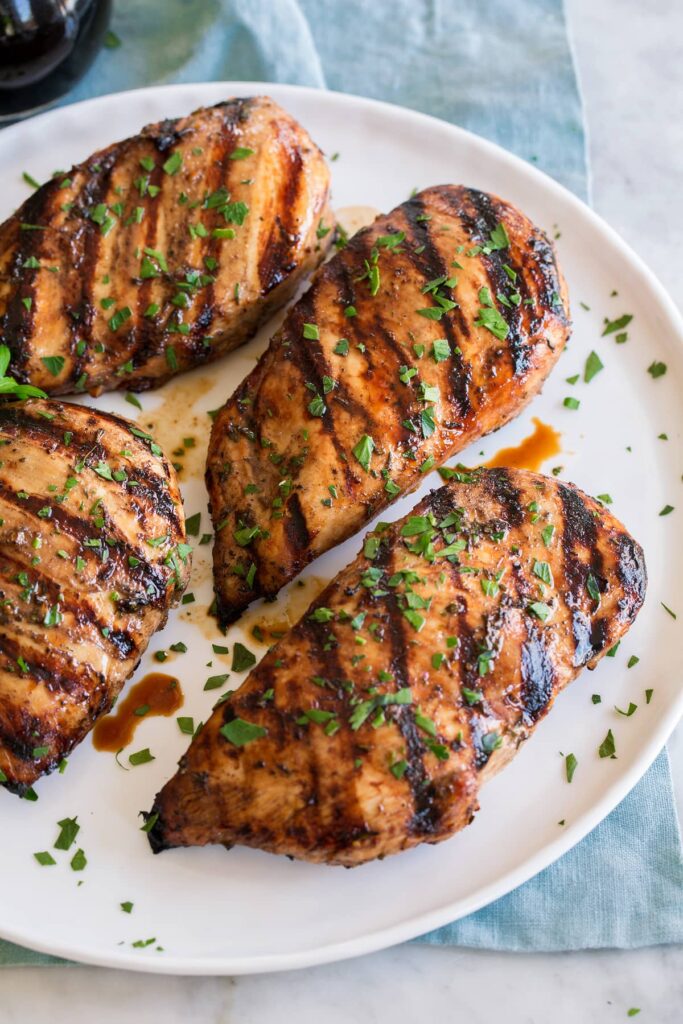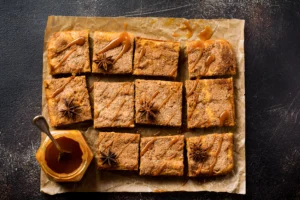
Introduction to Balsamic Vinegar Chicken Recipe
If you’re looking for a recipe that’s as delicious as it is versatile, you can’t go wrong with balsamic vinegar chicken. This dish combines the tangy sweetness of balsamic vinegar with the savory richness of chicken, creating a meal perfect for any occasion. Originating from the culinary traditions of Italy, balsamic vinegar has long been a favorite ingredient in marinades and glazes, bringing a unique depth of flavor to dishes.
Before diving into the recipe, it’s important to choose the right balsamic vinegar. A high-quality vinegar will elevate the flavor of the dish, enhancing both the marinade and glaze. Not sure where to start? Learn about the health benefits of balsamic vinegar and why quality matters in your recipes.
Ingredients and Their Roles
Here’s what you’ll need to make the perfect balsamic vinegar chicken:
- Chicken breasts or thighs (4 pieces): The star of the dish. Both options work well depending on your preference for lean meat or richer flavor.
- Balsamic vinegar (½ cup): Provides the tangy and slightly sweet base for the marinade and glaze.
- Honey or brown sugar (2 tablespoons): Adds sweetness to balance the acidity.
- Garlic (3 cloves, minced): Enhances the overall flavor with its aromatic kick.
- Olive oil (2 tablespoons): Helps the marinade penetrate the chicken and prevents sticking during cooking.
- Dried oregano (1 teaspoon): Brings an earthy note to the marinade.
- Salt and black pepper (to taste): Essential for seasoning.
- Optional: Fresh rosemary or thyme for garnish.
Step-by-Step Preparation Guide
1. Marinate the Chicken
- Combine balsamic vinegar, honey, garlic, olive oil, oregano, salt, and pepper in a bowl.
- Place the chicken in a resealable bag or shallow dish, then pour the marinade over it.
- Refrigerate for at least 30 minutes or up to 8 hours for deeper flavor.
2. Cook the Chicken
- Grilling: Preheat the grill to medium heat. Grill chicken for 6-7 minutes per side, basting with leftover marinade.
- Stovetop: Heat a skillet over medium heat. Cook the chicken for 5-7 minutes per side, ensuring it’s golden brown.
- Oven-Baking: Preheat the oven to 375°F (190°C). Bake the chicken for 25-30 minutes, brushing it with extra glaze halfway through.
Want tips on marinating chicken like a pro? Check out this guide to marinating chicken.

Variations of the Recipe
- Add Vegetables: Toss in cherry tomatoes, bell peppers, or zucchini for a complete one-pan meal.
- Use Chicken Thighs: For a juicier dish, opt for chicken thighs instead of breasts.
- Sweeten the Glaze: Replace honey with maple syrup for a unique twist.
Serving Suggestions and Pairings
Balsamic vinegar chicken pairs beautifully with:
- Side Dishes: Creamy mashed potatoes, roasted asparagus, or a fresh arugula salad.
- Wine Pairings: A medium-bodied red wine like Pinot Noir or a crisp white wine like Sauvignon Blanc. Learn more about pairing wine with chicken dishes.
Nutritional Benefits
This dish is not only delicious but also healthy! Here’s why:
- Balsamic vinegar is low in calories and rich in antioxidants.
- Chicken provides lean protein, essential for muscle growth and repair.
- Modifications are easy for dietary needs, like making it gluten-free or low-sodium.
Common Mistakes to Avoid
To ensure your balsamic vinegar chicken is a success:
- Don’t over-marinate; it can make the chicken mushy.
- Avoid using cheap balsamic vinegar—it often lacks depth and richness.
- Check the internal temperature; chicken is safe to eat at 165°F (74°C).

FAQs
What does balsamic vinegar do to chicken?
Balsamic vinegar tenderizes chicken by breaking down its fibers, resulting in a juicy and flavorful texture. It also infuses the chicken with its tangy and slightly sweet flavor, creating a delicious balance.
What does balsamic vinegar do to meat?
Balsamic vinegar acts as a natural tenderizer for meat, helping to soften it while adding a complex depth of flavor. The acidity in the vinegar enhances the natural taste of the meat and complements marinades and glazes.
What meat goes well with balsamic vinegar?
Balsamic vinegar pairs exceptionally well with chicken, beef, pork, and even lamb. Its versatility makes it a great choice for marinades and sauces across a variety of meats.
What does balsamic vinegar do to food?
Balsamic vinegar enhances the flavor profile of food by adding tangy, sweet, and umami notes. It acts as both a seasoning and a tenderizer, making it a staple ingredient in both savory and sweet dishes.
Conclusion
With its rich flavor and easy preparation, balsamic vinegar chicken is a recipe you’ll want to make again and again. Experiment with variations, adjust the sweetness or acidity, and serve it with your favorite sides to create a memorable meal. Share your own twists on this dish in the comments!


